Now, more than ever, we have become acutely aware that we all swim in each others’ mists and that proximity can transmit and infect. The western handshake and European cheek peck may soon become obsolete and the palm-press namaste of the sub-continent and the stratified bowing of the far east are beginning to make more sense.
Here in North America, the issue of wearing a protective face mask has exacerbated the ever-present tension between individual rights and general obligations. Some people have come to feel that the former always “Trump” the latter. My experience is that paying attention to the big picture never hurts. Rights come from looking up and pushing back against those who are pushing down on you and that can never be a bad thing. Obligations come from looking outward and around and seeing that you fit into something bigger, whether it’s your family, the community, the nation, or the whole biosphere itself. Your actions can impinge on that wider reach or they can be a stop-gap that mitigates negative consequences until something more permanent such as a vaccine comes along.
The wearing of medical masks in every day life may become a new cultural meme for us in the West within this decade.
Masks, of course, have served many purposes throughout history. They have been ritualistic and shamanistic, thespian, military, protective, and often a criminal accessory.
For superheroes, the main purpose has always been to provide that hero with anonymity and to create, for him or her, a drop-shadow secret identity. In this vein, our disguised comic book superheroes of today are much indebted to literary creations such as the Scarlet Pimpernel (1905) and Zorro (1919) and to the radio drama characters of the Depression such as The Shadow (1930), The Lone Ranger (1933), and The Green Hornet (1936).

The first masked hero to appear in panelled storytelling was probably Lee Falk’s The Phantom (February 1936) and the storyline included the revelation that the present Phantom was at the apex of a generational wake of Phantoms that extends back over centuries. In actual floppy comic book form, the first masked hero was The Clock who initially appeared in Centaur’s Funny Pictures Stories No. 1 (November 1936). However, the one that defined the genre had to be Batman who made his debut in Detective Comics No. 27 (May 1939).
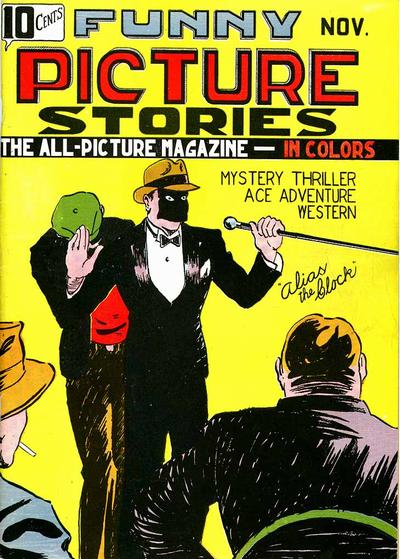
What do we find when we take a look at what masked heroes existed in those rare Canadian comics from World War II? The first thing that you notice is that there weren’t that many of them and that most that were there seemed to come mainly from one company.
That whole first year of Canadian comics, 1941, the hardest year to find Canadian comics from, had no masked heroes even though publishers such as Anglo-American, Hillborough Studio, and Commercial Signs of Canada, all in Toronto, and Maple Leaf Publications out in Vancouver, were in full swing. The Iron Man, Freelance, Nelvana, Dart Daring, and Whiz Wallace all operated without even the shadow of a simple domino mask.
Now, there is a peculiar aberration that pops up in April 1941 that we have to consider and that is Ted Steele’s hero Wolf Savage. He doesn’t appear in a comic book proper, but in a newsprint tabloid called Canadian Rocket that sold for 5 cents. Here is an article I did half-a-dozen years ago that looks at Wolf Savage. If we consider Canadian Rocket a comic book, then Wolf Savage is Canada’s first masked comic book hero, but I’m not sure we can. It is a 16-page tabloid with content that looks like a pulp magazine and not a comic book.

Jumping ahead a year, Montreal-based Educational Projects, the last of the big four Canadian comic book publishers on the scene, didn’t truck in fictional heroes at all, with the single exception of Canada Jack and he was all up front in a simple gymnastics outfit with no mask and no alter ego identity to back into.

Anglo-American Publications, which had the longest run of original Canadian comics through the war, didn’t resort to a single masked Axis fighter or crime fighter throughout–if you don’t count the grafted-on Fawcett characters such as Spy Smasher, Commando Yank, and Mr. Scarlet. Freelance, the Crusaders, Commander Steel, the Purple Rider, Dr. Destine, Terry Kane, and Red Rover all operated without any secret identities. Perhaps this tendency to straight-shooters who were one-sided coins was the result of some underlying, national Canuck sensibility that saw masks as an unnecessary nod towards the sinister. Who knows?

So we come to the realization that that World War II run of our first Canadian comics generally avoided the masked hero, except for one company, and that was Bell Features. The innovation of masked heroes happens early in 1942 with the publication of Active Comics No. 1 (Feb. 1942) by Commercial Signs of Canada, which, in another couple of months, becomes Bell Features. Note that Dime Comics No. 1 was published by the same company at the same time, but continued the tradition of soldier of fortune type heroes who never wore masks such as Rex Baxter and Johnny Canuck.

The first two masked heroes from that Active Comics No. 1 and the first two masked heroes in Canadian comic books altogether were Leo Bachle’s The Brain and Edmund Legault and Murray Karn’s Thunderfist. Neither of them featured front and centre on the cover of that initial issue, that place was given over to the nationally iconic image of Edmund Legault’s Corporal Wayne Dixon of the Royal Canadian Mounted Police. Thunderfist becomes the first masked hero to feature on a Canadian comic cover with issue 2 of Active Comics and this is followed by a cover featuring The Brain with issue three.
Now I don’t mean to say that Maple Leaf Publications out on the west coast was completely devoid of masked heroes. In fact, that publisher could possibly better the first appearance of The Brain and Thunderfist with a hero from early issues of Bing Bang Comics (perhaps the hardest of the long-running titles from the WECA era to collect). This hero was created by Vernon Miller and named Secret ‘7’. He had an air fighter’s leather helmet with goggles placed high up on his forehead, but under the bottom edge of that leather helmet was what looked like a black, domino-type mask. I don’t have much information on Secret ‘7’, but he appears to be a soldier of fortune type air ace who battles crime. He is on the cover of the third issue of Bing Bang Comics which is dated March-April 1942. This may be his first appearance, but if he begins in the first or second issues of that title, which both predate Active Comics No. 1, then Secret ‘7’ would have to be considered the first masked Canadian comic book hero.
The other Maple Leaf Publications hero that had a mask was Bert Bushell’s The Black Wing who first appeared in Lucky Comics Vol. 1 No. 10, dated Oct.-Nov. 1942. The Black Mask was originally Phil Dauntless, a Canadian air force pilot, who appeared in a series called “Ether Escapades” in the first nine issues of the title. In that ninth issue, Dauntless is framed for the theft of some important military papers and subsequently, court marshalled and discharged from service. Living up to his surname, he decides to go on fighting the Axis by becoming the Black Mask in issue 10 and then has about a year-long run in Lucky Comics.

While Maple Leaf Publications had The Black Mask, Bell Features had Ted Steele’s The White Mask who debuted in Triumph Comics No. 7 in the “Speed Savage” strip. Sportsman Speed Savage was the secret identity of The White Mask and though Speed got his name on the marquee, The White Mask did all the heavy lifting. The White Mask had two incarnations. For the first seven issues of his run, he was a film-noir Shadow-like figure in fedora and cape and for the rest of the run he slipped into the skin-tight and streamlined spandex we’ve come to associate with superheroes.
Triumph Comics also gave us Ross Saakel’s masked take on Fawcett’s Captain Marvel named Captain Wonder and the short three-issue run (Triumph 11-13) of Harvey Baldwin’s Black Avenger, pilot of a super plane also called the Black Avenger. The Black Avenger looked like he had some sort of welding helmet on with a tube extending out from the mouth area into his chest.
Of the other Bell Feature titles, Funny Comics and Commando Comics didn’t present us with any masked heroes. Besides The Brain and Thunderfist, Active Comics also gave us the masked hero Top Hat in its last issue of original material (No. 28). Dime Comics only gave us one masked hero and that was Ross Mendes’ Polka-Dot Pirate. Joke Comics, gave us Aram Alexanian’s Super Commando and Fred Kelly’s The Blade while Bell’s other title, Wow Comics, yielded Dingle’s The Penguin, René Kulbach’s Phantom Rider, and Gerry Lazare’s The Dreamer. Take note that The Penguin was never actually seen out of costume so that nobody knew what he looked like or who he was under that pointed beak mask. He did get the secret identity of playboy Bruce Baron when Dingle transformed him into the Blue Raven for one story that appeared in Slam Bang Comics No. 7 after the run of Wow Comics was over.
So you can see that our golden age masked heroes mostly came from Bell Features comics. There were a couple of masked heroes from some of the minor publishers such as Rucker’s Captain Victory in the second issue of Weekender Comics, and the Dartman, Nemesis, and Captain Daring from the three issues of Lightning Comics from Feature Publications. However, it was Bell Features who gave us the bulk of our comic book heroes who concealed or obscured their natural facial features with masks of some sort.
Sometimes these masks were to protect a civilian identity and sometimes for simple dramatic effect (as with Super Commando, The Blade, and Phantom Rider who had no secret identities) but you can’t deny that they added an extra layer of mystery and magic to the mythos and made these heroes more imposing when they fought crime.
We’d have to wait two decades until the Hamilton fanzines of the late 60’s by Terry Edwards, Vince Marchesano, and Art Cooper for new Canadian masked superheroes such as Freedom Fighter and Astro the Space Guardian and then a half-dozen years again before James Waley’s Northern Light appeared in ORB Magazine No. 2 (July 1974). All before the debut of Captain Canuck.
Unlike the superheroes we’ve just looked at, the face masks that we now wear, when we launch ourselves out of our stay-at-home lives, are not meant to conceal our identities, nor are they meant to make us mysterious or intimidating to those around us. They are meant to minimize the probability of those around us contracting the covid19 virus directly from us. They immediately make us heroes when we put them on.
NEWS
I’ve started up my thought experiment audio podcast called “Comics for the Apocalypse” which, analogous to the BBC radio programme Desert Island Discs, asks each guest to choose five comics or graphic novels that they could put into a knapsack that they could take with them on a journey through the desolate landscape of a post-apocalyptic world.
So far, I’ve managed to put three sessions up and these are with guests Walter Durajlija, Mel Taylor, and Ron Hobbs. If you get a chance please check them out here. You’ll be surprised at some of the choices made.
I now do them on Zoom and would love to hear from anybody interested in participating and finding out what five items you would choose.








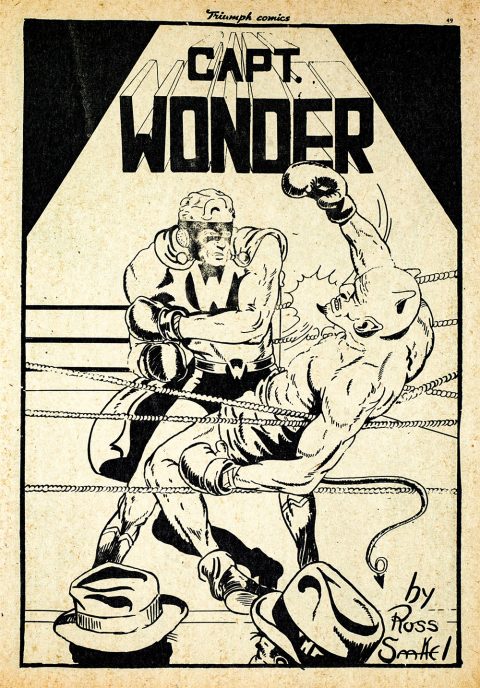
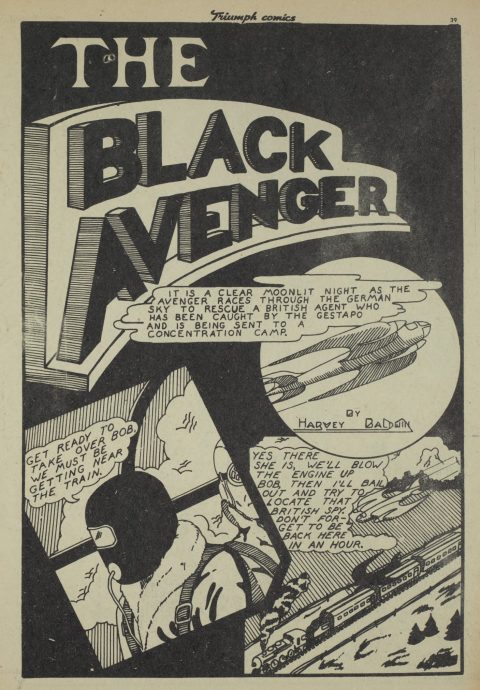

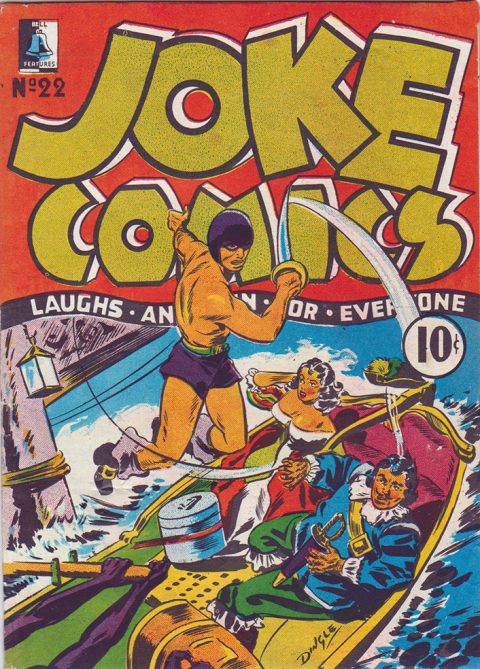


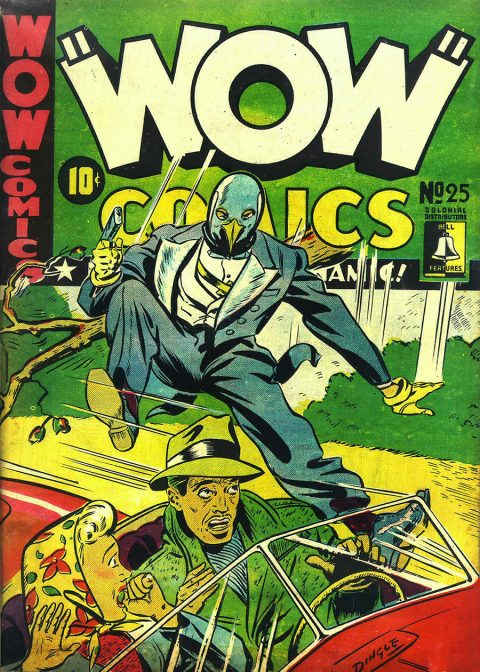

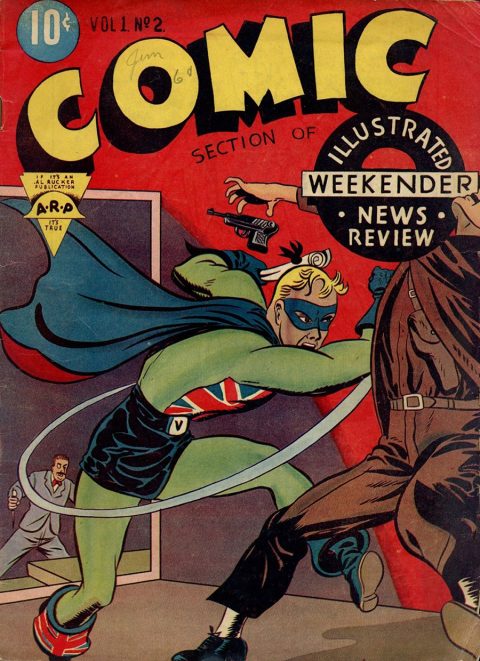



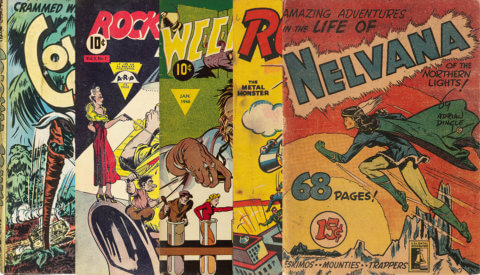


The Gray Seal, Jimmy Dale, was the very of first of the mystery men who used a mask.
He wore a mask and slouch hat to conceal his identity and this character’s first published story was back in 1914, by Canadian Frank L. Packard. Many of the later pulp and comic book heroes owe him a great deal, the Bat-mans (utility belt) and Zorros, the Shadow, The Penguin from the Canadian Whites and so on.
Jim, thanks for this information which is new to me. The two, Canadian author Packard and his masked creation Jimmie Dale, shouldn’t be allowed to recede further into history without having a bright light shone on them.
You’re welcome Ivan, and I agree. The Grey Seal was a particular favourite of Walt Disney by the way and he wanted to do something with the character (film or tv) but could never get Dale off the ground. I guess his Disney Zorro television show ended up in it’s place.
Jim I found out that IDMb lists a 1917 silent 15 part serial called “Jimmie Dale Alias the Gray Seal” starring E. K. Lincoln as the title character. This Canadian created character needs to be better known.
Kirk Wallace sent me a note with the following information:
There is a three page Secret 7 story in Bing Bang #3, signed by VIM PEARSON (whoever that is – any ideas?). The story starts with “7” apparently at an airfield, wearing a black face mask covering his eyes, but otherwise just hanging out. He hears a strange noise (a large airship as it transpires) and heads off to investigate. It is a serial, but there is no introduction or synopsis to set the scene, or say who “7” is. He is not mentioned in issue #2 – I could not check issue #1.
Another three-pager in #4 carries on with the story. It is unsigned. In #5, the feature is now accredited to Vernon Miller.
The serial continues to a conclusion in issue 8 (Jan./Feb. 1943), and is gone in #9. The final chapter is also unsigned; the rest are by Miller.
One other interesting finding – just into episode 4, he loses (discards) his flyers’ helmet, goggles and jacket, and they do not reappear. The artwork also seems to deteriorate at about this time. He does keep the mask.
Not much of note, but seems to have started in Vol.1 #3.
It’s amazing Ivan how you can turn a simple one word title like “Masks” into an outpouring of information from collectors who have rare books rarely seen in to the public market into information puzzle pieces that complete details about Canadian Whites history that normally take years to learn.
Ivan, I checked my copy of Bing Bang 1 and there is no mention of Secret 7. The only mask story I could find is the first Pinky story in which Pinky dons a mask to become a burglar.
Thanks for your kind comment Activejim. I’ve made so many great contacts through this column and any claim I have to knowledge about those first Canadian comics wouldn’t be as complete as it’s turned out to be without them.
Tony, thanks for adding this info from your copy of the first issue of Bing Bang. Secret ‘7’ must then indeed begin with issue No. 3 that has him on the cover as Kirk concuded.
Yes, I was going to comment on this aspect of Canadian heroes a while back that I noticed when reading the LAC collection. Now you’ve made it into a short but in depth article so thanks for that. Would it have helped our heroes continue after the war if they had been masked crusaders?
Good catch on the Gray Seal.
Maybe that’s a JIM Pearson sig on the Secret Seven strip? No idea who he’d be but it sounds a more typical Canadian name.
I was sick for a while so catching up on things now. Hope everybody is safe and well. I don’t go out much but when I do I got the mask on. If only it were a Canuck hero fabric pattern…
Cheers!
Ivan: what was Vernon Miller’s middle name? Did it start with an ‘I’? Could the signature have been Vernon I. Miller (as in VIM)? Maybe Pearson was a sort of code. A little further mystery. Hmmm?!
Tim, good to hear that you’re over being a bit sick. I only go out for groceries and pharmaceuticals and wear a mask and gloves. I’m pretty sure I’ve seen that name Vim Pearson somewhere else in a WWII Canadian comic… I wish I could remember where. I’m pretty sure it was “Vim” and not “Jim”.
Klaus, Vernon Miller’s middle name was “Hope” which was also the middle name of his father, but I do understand the reach you are making.
Ivan: Let’s really reach out. Perhaps Miller signed VHM but the ‘H’ wasn’t printed well and looked like an ‘I’. The Pearson may have been the inker so VIM Pearson could have been two people and not one.
How is that for a stretch?